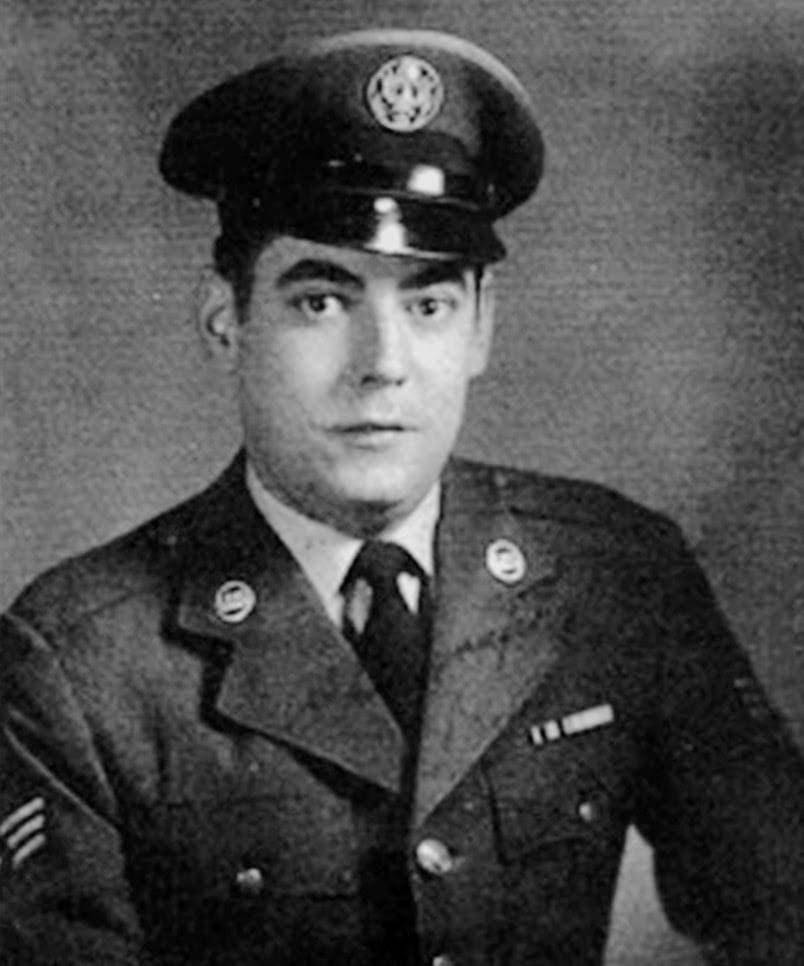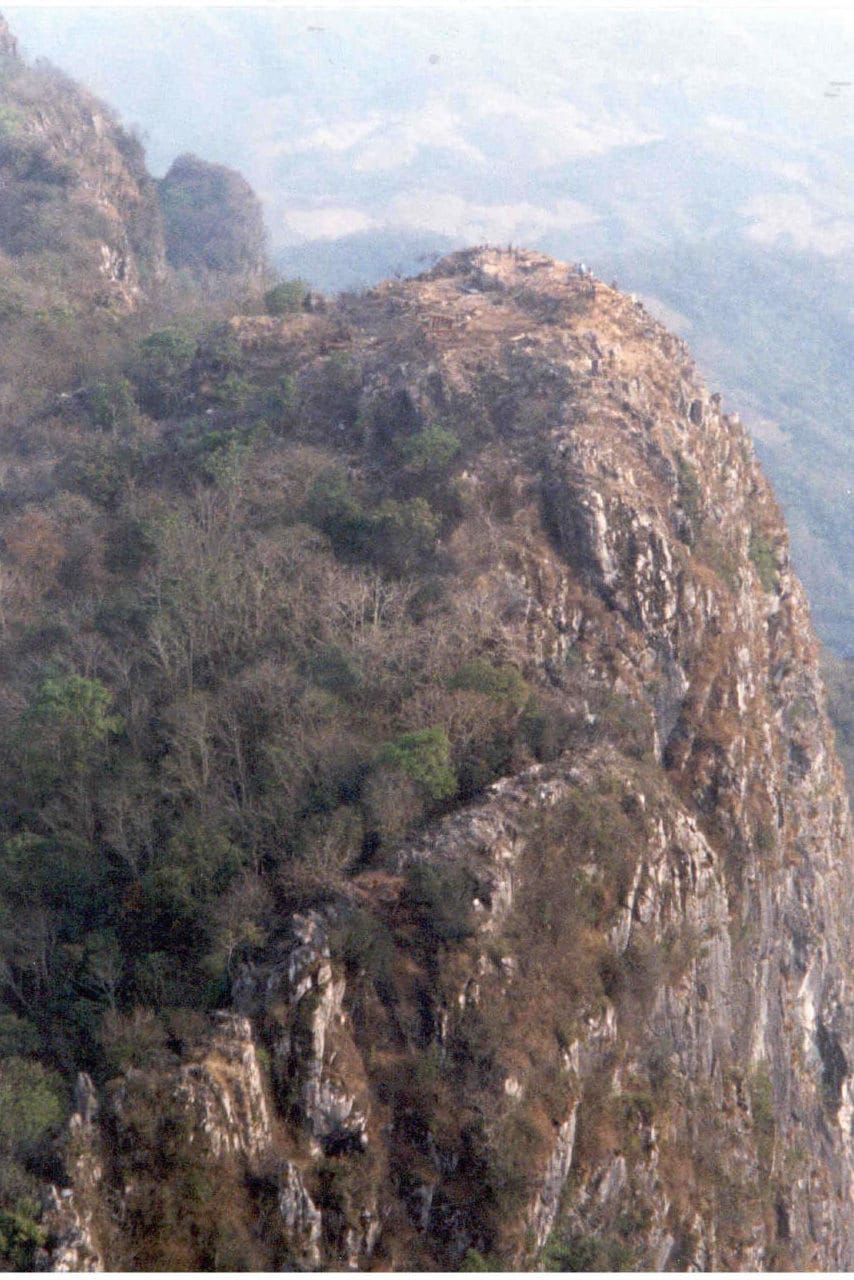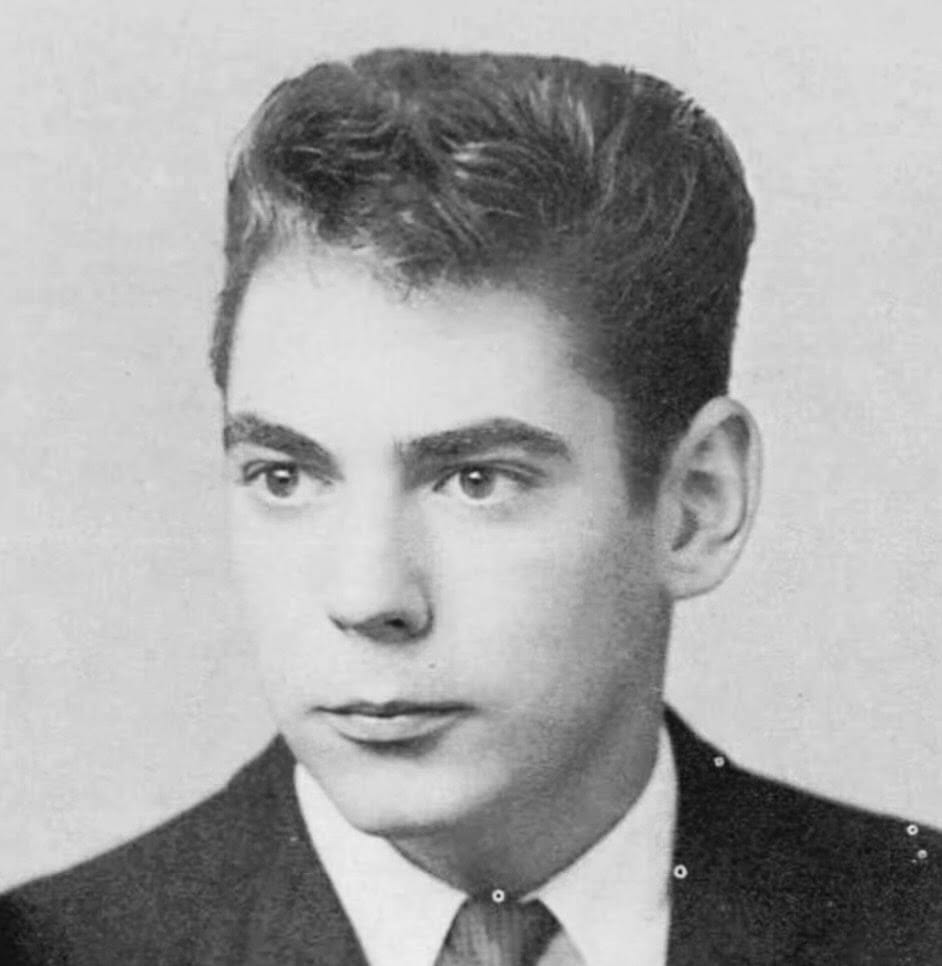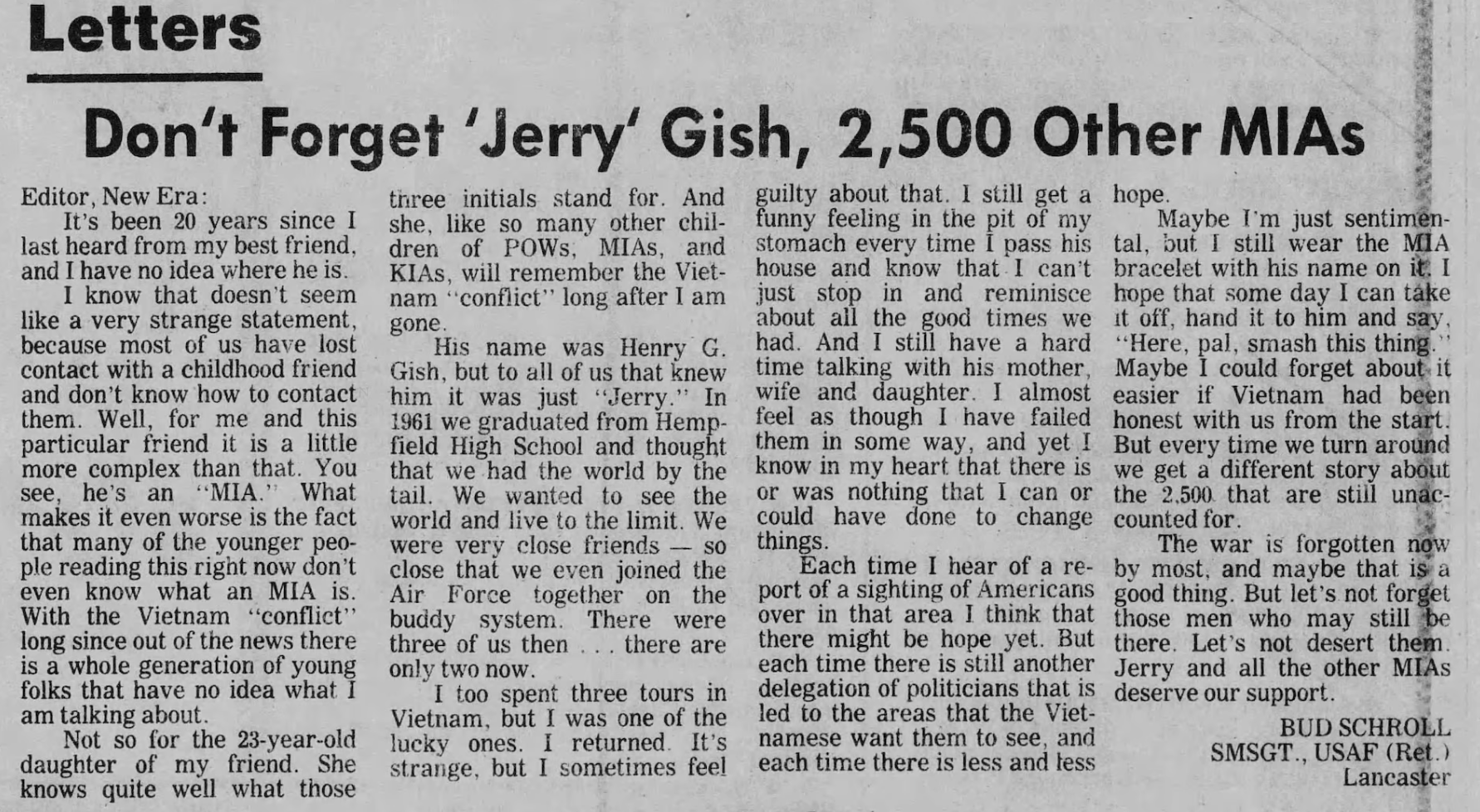Fallen Vietnam soldier's remains to be buried in Berea Cemetery
CIA covered up 1968 death of USAF Staff Sgt. Henry Gerald "Jerry" Gish, killed during Vietnamese commando raid on secret US operation in Laos

BEREA—He was 17 when he joined the Air Force. He was 26 when he joined the thousands of US service men reported missing in Vietnam, even though the CIA knew his remains lay on a remote mountain top in Laos.
Now, the remains of US Air Force Staff Sergeant Henry Gerald "Jerry" Gish are being repatriated. A visitation for Gish will be held Saturday, September 20, from noon to 2pm at Lakes Funeral Home in Berea. A memorial service will follow. Gish's remains will be buried in Berea Cemetery.
Gish was born and raised in Lancaster, Pa., the son of Henry Erb and Dorothy Lehman Gish. His daughter, Terrie, his widow, Doris, and other family now live in the area. Gish was at last accounted for by the US military on June 23 this year.

Part of secret CIA mission
Gish, a radar technician, was part of a top-secret CIA mission called Heavy Green. The mission was based at Lima Site 85, a tactical air navigation radar site on a 5,600-foot mountain peak called Phou Pha Thi, "Mountain Above the Clouds", in the Laotian jungle, according to the US Defense POW/MIA Accounting (DPAA). Gish and ten other operatives at Lima Site 85 were killed when Vietnamese commandos scaled the mountain face and raided the site.
As part of the cover-up, at the time of his death, Gish was an unarmed civilian, having been "sheep-dipped", that is, released by the military to work as a civilian for Lockheed Air Service.
A more detailed account of what befell Gish was given in a now defunct local Lancaster newspaper, the New Era, in December 2005. The article is part of a DPAA collection of photos and news clippings about Gish.
Because Laos was at that time thought to be neutral in the US-Vietnam conflict, the US military presence there was clandestine, according to the story written by New Era staff writer, Ad Crable.
Subsequently, when Gish and fellow members of Heavy Green were killed in action, the CIA and Department of Defense, fearing a public backlash over the operation, would not share with the dead men's families the details of what had happened to them.

Families threatened by DOD
Further, Gish's family and those of the other men killed on that Laotian mountain top, "were warned by the military not to talk to each other, and certainly not the media, under threat of prison and losing their children," Crable wrote.
For all the Gish family knew, their son, brother, father and husband Gish was an unaccounted for prisoner of war who might one day return. Until now, there had never been an obituary for Sgt. Gish, according to Crable.
Yet, the Air Force was well aware that Gish had been killed by a ricocheting bullet during the early morning Vietnamese raid on March 11, 1968, and that his body had been dragged atop a live grenade in order to save the lives of the four other men he'd been taking cover with in a mountain top cave, wrote Crable.
"A few hours later, under the protective cover of A-1 Skyraider aircraft, US helicopters were able to rescue eight of the men," the DPAA wrote in a statement about Gish's repatriation. "Gish and 10 other Americans were killed in action and unable to be recovered," according to the statement. The US military destroyed the base the next day with an airstrike to prevent it from falling into enemy hands. The bodies of the fallen were not retrieved at the time.
Truth hidden for three decades
That Gish and the others were dead was only revealed after one of the surviving wives said she got "fed up", according to Crable, and despite the DOD's threats against her and the other surviving families, contacted an Associated Press reporter who told her story. The media coverage ultimately resulted in the 1983 declassification of Lima Site 85.
However, the full story wasn't known until 1999. That is when a book about the secret mission and the CIA's cover up, One Day Too Long, written by Timothy Castle, was published. Castle based his work extensively on the evidence provided by the whistleblower wife, Ann Holland.
Castle's book told of how Gish and his fellow mission operatives had sent their higher-ups multiple reports of a road being constructed by the Vietnamese through the jungle below the mountain. The Heavy Green operatives warned the CIA that their the covert US installation would be attacked imminently. The military ignored the reports and then covered up what happened at the secret base after it was attacked.
One CIA analyst concluded in 1995 that the attack on Lime Site 85 was the "beginning of the end" for non-Communist forces in the region, in part because the secret base had been instrumental in guiding the bombings of Hanoi. Without it, bombings became less accurate.
Extensive forensics
The discovery of Gish's remains was the result of a a multi-year forensics collaboration with some of the very same Vietnamese commandos who'd killed Gish and his fellow servicemen, according to an article in the Modesto Bee, also in the DPAA's collection.
The DPAA said in a statement that attempts to recover the remains of the 11 men from Phou Pha Thi began in 1994 with help from Vietnamese and Laotian officials, and from the former commandos who'd told a US recovery team that after killing Gish and the others, they'd flung their bodies off the mountain top.
Re-enacting this, the recovery team threw mannequins off the mountain and video taped where they landed according to the article in the Modesto Bee. Drones then helped study the sites further. Excavations began in 2022, and earlier this year, DNA analyses of remains found at a site helped determine they were Gish's.
Some of the other servicemen's remains have also been recovered from the mountain, including those of Sgt. Donald Springsteadah, Tech. Sgt. Willis Hall, and Tech Sgt. Patrick Shannon.

'Always a smile on his face'
Gish was remembered by his friend and fellow Air Force recruit, Stanley Slitz, who'd enlisted under the buddy system with Gish, and who'd also been the one to throw his dead friend's body on the grenade, according to Crable. "He always had a smile on his face," Slitz was reported as saying. Gish had been the best man at Slitz's wedding, according to the story.
Slitz recalled to Crable how as the men hid in the cave, Gish was killed in a hail of gunfire. He said the Vietnamese also threw multiple grenades in the cave. The Americans tried to throw the grenades back out, but one was too far from their reach, so Slitz said he rolled his friend's body on to it, then jumped atop Gish's body himself "for good measure", The New Era reported. Slitz was badly injured in the grenade explosion but recovered.
At the time of his death, Gish had been married to Doris for three years and had a two-year old daughter.
Rolling Thunder escort
On Thursday, September 18, members of the local nonprofit Rolling Thunder KY5, with assistance from the Kentucky State Police, will escort Gish's remains as they are repatriated.
On Thursday, September 18, Rolling Thunder Ky5 will escort Gish's remains from Louisville where they will be flown, to Berea where the service in Gish's memory will be held on Saturday.
Rolling Thunder is a national nonprofit organization with local chapters, founded by two Vietnam veterans in 1987 to bring awareness to the issue of prisoners of war and those who were missing in action after US military campaigns. The organization is primarily associated with their annual Memorial Day motorbike ride to the Vietnam Veterans Memorial in Washington.
Those interested in riding with the escort, either by motorbike or car, are invited to meet Rolling Thunder at the Marathon Gas Station at For more information about the meeting locations, visit this link.
Something worth clicking. Become a paid member of The Edge now.
This story has been updated with the name of Gish's daughter.
